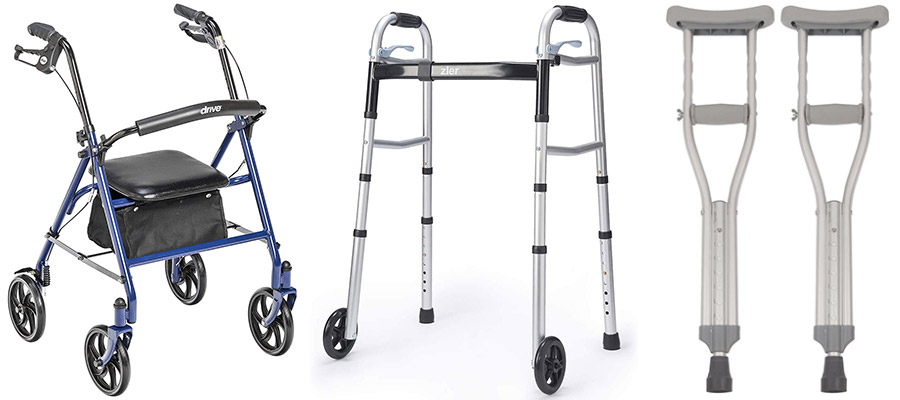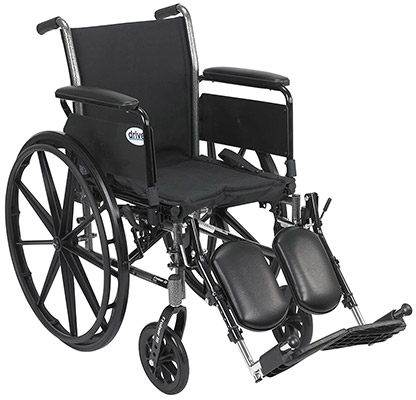Medicare’s Durable Medical Equipment (DME) Competitive Bidding Program rocked the lives of many Americans who depend on mobility devices to live their lives.
Under this program, suppliers must submit bids and win a contract that allows them to provide certain products and services to Medicare beneficiaries living in a particular area.
This impacted accessibility for disabled individuals in a negative way. But why did this happen? And where does the program stand now? Read on!
A Brief History of the DMEPOS Competitive Bidding Program

The first phase of DME competitive bidding was rolled out in 2011, with nine US regions incorporated into the program.
By 2013, 91 more regions were added, changing how local suppliers could administer service and provide medical equipment to many Medicare beneficiaries.
These areas, called competitive bidding areas (CBAs), were Medicare’s solution to clamping down rampant fraud and abuse of the system.
Under the program, suppliers in these areas are required to place bids, with the lowest bidder being recognized as a Medicare supplier for their respective area.
The winning bidders then undergo a meticulous screening process to meet eligibility, financial, and accreditation standards.
So how does Medicare benefit? Competitive bidding enables Medicare to establish the amount paid for each product category included in the program.
According to CMS, the program’s goal is, “reduce beneficiary out-of-pocket expenses and save the Medicare program money.”
DME Competitive Bidding and Complex Rehabilitation Technology
Complex Rehabilitation Technology (CRT) includes highly specialized equipment, such as customized mobility components, wheelchairs, and positioning systems.
In 2016, it was announced that competitive bidding would extend to CRT, even though this goes against the Medicare Improvements to Patients and Providers Act of 2008, which exempts CRT from competitive bidding.
Since suppliers have to compete for funding, with the outcome being one Medicare provider per area, this mandate took out several local suppliers in these CBAs, especially powerchair providers.
Some suppliers stopped offering wheelchair services altogether, deciding it was easier to skip over the confusion of what they can and can’t provide.
Wheelchair users soon found out the hard way that if they needed a repair or a custom powerchair, they had to travel far to reach a supplier, or the bid prices were too low to cover advanced products and services fully.
As well, questions were raised about whether the bidding system was manipulated to create low funding rates, with providers discovering a 45% cut in Medicare funding on DME goods, Group 2 powerchairs included.
The bottom line: competitive bidding ultimately slashed DME funding and took away the power of consumer choice.
Good News for Wheelchair Users in 2021

So, where does DMEPOS competitive bidding stand now in 2021? After a shaky debut, the impact has been felt at every level of the industry through the years, with mobility device recipients bearing the brunt of the struggle.
The outcome was even too much for Medicare to ignore, and CMS graciously produced reports showing that the process failed to meet their financial expectations.
In January 2021, the competitive bidding program now only includes off-the-shelf-back and knee braces, removing 13 other DME categories-including mobility devices- from the program.
This, in turn, allows local suppliers to meet the needs of the communities in CBAs areas, without the added constraints on services or devices.
And that’s not all…
CMS also announced a highly anticipated proposal on DMEPOS payment policy that includes the following:
- An ongoing 50/50 blended rate to provide relief for rural HME suppliers, with suppliers in non-bid areas being paid 100% of the adjusted fees.
- Removing Complex Rehab and manual wheelchairs, plus mobility accessories from the program.
- Streamlined changes to the Healthcare Common Procedure Coding System (HCPCS) Level II Code Application Process.
- Changes for Benefit Category Determinations and Payment Determinations for durable medical equipment, accessories, and services that fall under Part B.
- Changes to Continuous Glucose Monitors under Part B classification and payment.
- Classifying External Infusion Pumps as durable medical equipment.
DME Competitive Bidding: Our Final Thoughts
We can gather from DME competitive bidding latest news that the program is less of a threat to the mobility industry than it was when it first debuted.
Instead, Medicare beneficiaries can expect streamlined changes on the horizon that gives them easier access to the mobility tools that enable them to live a better life.
As of now, the future of the program is uncertain, but it’s highly unlikely we’ll see Complex Rehab wheelchairs roped back into it, after all the process of purchasing a wheelchair is robust enough!
Resources & References:
- DMEPOS Competitive Bidding, CMS.
- Competitive Bidding Program Areas & Items, Medicare.